Renault Clio vs Fiat 500 – Differences & prices compared
Compare performance, boot space, consumption and price in one view.
Find out now: which car is the better choice for you – Renault Clio or Fiat 500?
The Renault Clio (Hatchback) comes with a Full Hybrid or Petrol engine and Automatic or Manuel transmission. In comparison, the Fiat 500 (Hatchback) features a Electric engine with Automatic transmission.
When it comes to boot capacity, the Renault Clio offers 391 L, while the Fiat 500 provides 185 L – depending on how much space you need. If you’re looking for more power, decide whether the 143 HP of the Renault Clio or the 118 HP of the Fiat 500 suits your needs better.
In terms of consumption, the values are 4.30 L per 100 km for the Renault Clio, and 13 kWh for the Fiat 500.
Price-wise, the Renault Clio starts at 16600 £, while the Fiat 500 is available from 23100 £. Compare all the details and find out which model fits your lifestyle best!
In the battle of compact city cars, the Fiat 500 and Renault Clio each offer distinct charms and functionalities. While the Fiat 500 shines with its iconic retro design and nimble urban handling, the Renault Clio boasts more interior space and advanced tech features, making it a practical choice for modern commuters. Ultimately, the choice between these two depends on whether you prioritize style and tradition or versatility and innovation.
Renault Clio
The Renault Clio continues to impress with its sleek design and agile handling, making it a standout choice in the compact car segment. Inside, it offers a surprisingly spacious and comfortable cabin, crafted with high-quality materials that enhance the driving experience. Its fuel efficiency and reliable performance make it an attractive option for both city commuting and longer journeys.
details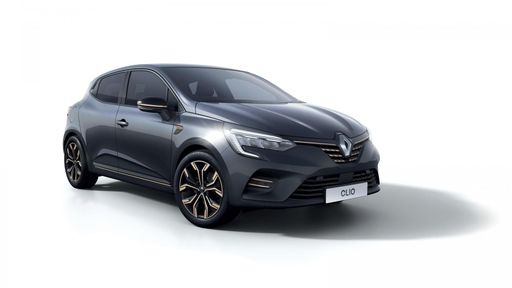 @ renault-presse.de
@ renault-presse.de
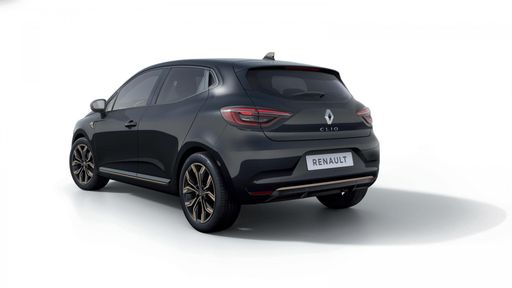 @ renault-presse.de
@ renault-presse.de
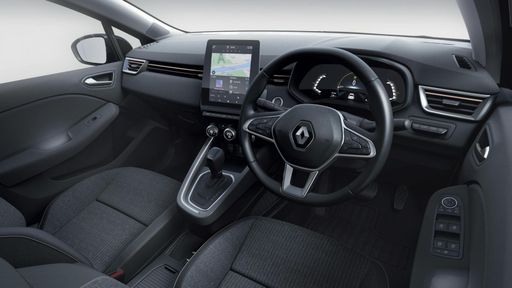 @ renault-presse.de
@ renault-presse.de
Fiat 500
The Fiat 500 is a compact and stylish city car that has captured the hearts of urban drivers with its charming retro design. Its nimble handling and efficient engine make navigating tight city streets a breeze, while its cosy interior offers a surprising amount of comfort and modern technology. The car's iconic silhouette and vibrant colour options ensure it stands out, offering a unique blend of timeless appeal and contemporary flair.
details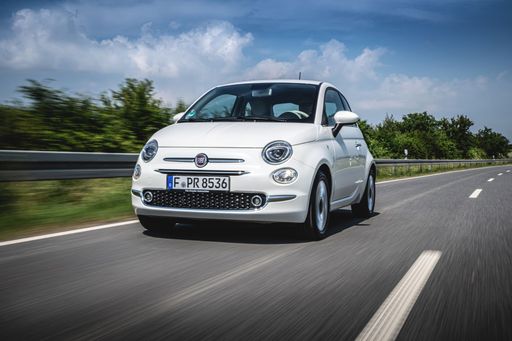 @ media.stellantis.com
@ media.stellantis.com
 @ media.stellantis.com
@ media.stellantis.com
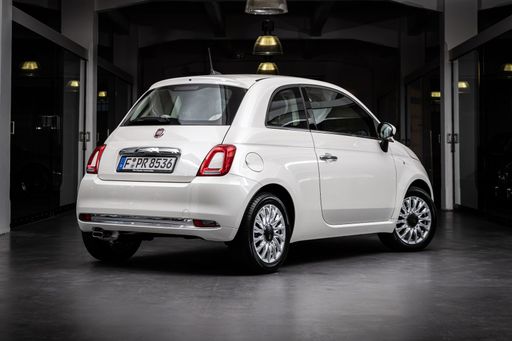 @ media.stellantis.com
@ media.stellantis.com
A Clash of Compact Legends: Fiat 500 vs Renault Clio
When it comes to compact cars, two names stand out prominently in the automotive landscape: the Fiat 500 and the Renault Clio. Both are celebrated for their distinct styles, innovations, and efficiency. However, there are substantial differences that could sway potential buyers depending on their priorities. Here, we dive into a detailed comparison of the technical aspects and innovations that define these iconic hatchbacks.
Design and Dimensions
The Fiat 500 continues to carry its signature retro charm with compact dimensions at 3,632 mm in length, 1,683 mm in width, and 1,527 mm in height. It is designed to be a nimble city car, perfect for navigating tight urban spaces. In contrast, the Renault Clio offers a more contemporary design, with slightly larger dimensions of 4,053 mm in length, 1,798 mm in width, and a height of 1,440 mm, providing a bit more presence and interior space on the road.
Powertrain and Performance
The Fiat 500 embraces modernity with its electric powertrain, producing 118 HP and a torque of 220 Nm. It boasts a seamless driving experience with its reduction gearbox and front-wheel-drive configuration. The electric model offers an impressive range of up to 321 km, making it a strong choice for those seeking environmentally friendly transportation.
On the other hand, the Renault Clio offers more diversity in its engine types, including full hybrid, petrol, and LPG options. Its most potent hybrid configuration churns out 143 HP with 205 Nm of torque, allowing for a robust driving experience without compromising on fuel economy—consumption is just 4.3 L/100km for the hybrid variant. The Clio’s versatility gives it an edge for drivers who want options that align with their preferences or local fuel availability.
Interior and Comfort
Inside, the Fiat 500 is designed to accommodate four seats, with a trunk capacity of 185 L, reflecting its focus on optimizing space within its subcompact form. Despite the limited seating, the 500 remains a favorite for those who value style and compactness over size.
The Renault Clio, with its capability to seat five passengers and a more generous trunk space of 301 L, is perhaps better suited for families or those requiring additional cargo space. The Clio prioritizes comfort and practicality while maintaining a stylish interior layout.
Efficiency and Environment
In terms of environmental impact, the Fiat 500 shines with a CO2 emission rating of 0 g/km, attributable to its all-electric nature. This positions the car firmly within the highest CO2 efficiency class of A, making it an exceptional choice for eco-conscious drivers.
While the Renault Clio’s emissions vary depending on the engine choice, it still presents a competitive offering with CO2 outputs as low as 97 g/km for the hybrid model, characterized by an efficiency class of C, which is commendable for a hybrid vehicle of its size.
Conclusion: Choosing Your Compact Companion
Ultimately, the choice between the Fiat 500 and the Renault Clio boils down to individual needs and preferences. The Fiat 500 appeals to those looking for a chic, eco-friendly city car, whereas the Renault Clio provides versatility, space, and a variety of powertrain options for those who might frequently venture outside the city. Both vehicles exhibit a blend of innovation and tradition yet cater to distinct aspects of modern driving demands.

|

|
|
|
|
Costs and Consumption |
|
|---|---|
|
Price
16600 - 23000 £
|
Price
23100 - 35600 £
|
|
Consumption L/100km
4.3 - 5.3 L
|
Consumption L/100km
-
|
|
Consumption kWh/100km
-
|
Consumption kWh/100km
13 - 14.7 kWh
|
|
Electric Range
-
|
Electric Range
190 - 321 km
|
|
Battery Capacity
0.60 kWh
|
Battery Capacity
21.3 - 37.3 kWh
|
|
co2
97 - 121 g/km
|
co2
0 g/km
|
|
Fuel tank capacity
39 - 42 L
|
Fuel tank capacity
-
|
Dimensions and Body |
|
|---|---|
|
Body Type
Hatchback
|
Body Type
Hatchback
|
|
Seats
5
|
Seats
4
|
|
Doors
5
|
Doors
3 - 4
|
|
Curb weight
1124 - 1331 kg
|
Curb weight
1330 - 1475 kg
|
|
Trunk capacity
301 - 391 L
|
Trunk capacity
185 L
|
|
Length
4053 mm
|
Length
3632 mm
|
|
Width
1798 mm
|
Width
1683 mm
|
|
Height
1440 mm
|
Height
1527 mm
|
|
Payload
398 - 406 kg
|
Payload
250 - 305 kg
|
Engine and Performance |
|
|---|---|
|
Engine Type
Full Hybrid, Petrol
|
Engine Type
Electric
|
|
Transmission
Automatic, Manuel
|
Transmission
Automatic
|
|
Transmission Detail
Automatic Gearbox, Manual Gearbox
|
Transmission Detail
Reduction Gearbox
|
|
Drive Type
Front-Wheel Drive
|
Drive Type
Front-Wheel Drive
|
|
Power HP
67 - 143 HP
|
Power HP
95 - 118 HP
|
|
Acceleration 0-100km/h
9.3 - 17.1 s
|
Acceleration 0-100km/h
9 - 9.5 s
|
|
Max Speed
160 - 174 km/h
|
Max Speed
135 - 150 km/h
|
|
Torque
95 - 205 Nm
|
Torque
220 Nm
|
|
Number of Cylinders
3 - 4
|
Number of Cylinders
-
|
|
Power kW
49 - 105 kW
|
Power kW
70 - 87 kW
|
|
Engine capacity
999 - 1598 cm3
|
Engine capacity
-
|
General |
|
|---|---|
|
Model Year
2023 - 2025
|
Model Year
2023 - 2025
|
|
CO2 Efficiency Class
C, D
|
CO2 Efficiency Class
A
|
|
Brand
Renault
|
Brand
Fiat
|
Renault Clio
Introduction to the Renault Clio
The Renault Clio, a popular choice among compact cars, has continually advanced its design and technology to maintain a strong position in the automotive market. With enhancements in engineering, efficiency, and aesthetic appeal, the Clio remains a top contender in the hatchback category.
Advanced Hybrid Technology
The Renault Clio's hybrid technology is one of its standout features. The E-Tech Hybrid system optimises both performance and efficiency, offering a seamless transition between electric and fuel-powered driving. This setup results in an impressive fuel consumption rate of 4.3 L/100km, making it an attractive option for eco-conscious drivers.
Efficient Engine Options
Renault offers a variety of engine choices for the Clio, accommodating different driving styles and preferences. From the economical SCe 65 manual variant to the powerful TCe 100 LPG gas version, each option is engineered to balance performance with fuel efficiency. With outputs ranging from 67 to 143 PS, drivers can enjoy a tailored driving experience.
Design and Comfort
The Renault Clio stands out with its sleek and modern design, characterized by its hatchback body style. The interior boasts an ergonomic layout with seating for five, ensuring passenger comfort and convenience. With a boot capacity of 301 to 391 litres, the Clio also offers practical storage solutions for everyday use.
Safety and Innovation
Safety is a key priority for Renault, and the Clio reflects this commitment with its suite of innovative safety features. Advanced driver-assistance systems are integrated throughout, enhancing both safety and usability. The Clio encompasses features like lane departure warning, automatic emergency braking, and adaptive cruise control.
Cost Efficiency and Environmental Impact
The Renault Clio not only offers affordability with pricing ranging from €18,450 to €26,800, but also promises low running costs. With CO2 emissions between 97 and 130 g/km, the Clio fits well within the C and D efficiency classes. This makes it a cost-effective and environmentally friendly choice for modern drivers.
Conclusion
Renault Clio remains a dynamic, dependable and economical option in the compact car segment. With its innovative technologies, diverse engine options, and commitment to safety and design, the Clio continues to impress and adapt to the evolving demands of the automotive world.
Fiat 500
The Timeless Charm: Introducing the Fiat 500
The Fiat 500 has long been a symbol of Italian style and urban practicality. As we navigate a new era in automotive history, the Fiat 500 continues to adapt and remains a much-loved vehicle worldwide. Let’s delve into the latest technical details and innovations that make this car a modern classic.
Electric Heartbeat: The Engines and Performance
The latest Fiat 500 models are powered entirely by electricity, showcasing a commitment to sustainable mobility without sacrificing performance. Under the stylish bonnet lies a choice between two power outputs, starting from a lively 70 kW (95 PS) to an energetic 87 kW (118 PS). This range of electric motors ensures that whether you’re navigating narrow city streets or cruising along open roads, the Fiat 500 delivers engaging performance with zero emissions.
Efficiency Meets Innovation: Energy Consumption and Range
Efficiency is at the forefront of the Fiat 500’s design. With energy consumption figures as low as 13 to 14.7 kWh/100km, the car balances power and performance efficiently. Electric range varies across the models, from 190 km for those designed for short urban commutes to an impressive 321 km for longer journeys. The innovative lithium-ion battery options—spanning 23.8 kWh to 42 kWh—are neatly integrated to maintain the car’s compact dimensions.
Technological Marvel: Smart Features and Design
The Fiat 500 is adorned with advanced features that enhance convenience and safety. It comes with an intuitive infotainment system that includes smartphone connectivity, navigation, and various driver assistance technologies, ensuring a seamless driving experience. The “La Prima” equipment line offers premium materials and a luxurious feel inside the cabin, making every journey comfortable and enjoyable.
Urban Flexibility: Compact Dimensions and Practicality
Designed for urban environments, the Fiat 500’s dimensions make it ideally suited for city dwellers. With a length of 3632 mm, width of 1683 mm, and height of 1527 mm, it’s easy to navigate through traffic and park in tight spaces. Despite its compact size, the Fiat 500 provides a practical boot capacity of 185 litres, perfect for daily errands or a weekend getaway.
Commitment to the Environment: Sustainability Focus
The Fiat 500 exemplifies a dedication to eco-friendliness with its CO2 emissions at zero, earning it an A in CO2 efficiency class. By choosing this vehicle, drivers are contributing towards a future with reduced automotive pollution, supporting cleaner air and healthier urban living.
Conclusion: The Future of Urban Driving
The Fiat 500 perfectly blends timeless style with modern electric innovations, setting a precedent for future city cars. Whether you prioritise aesthetic design, sustainable driving, or a premium driving experience, the Fiat 500 is designed to exceed expectations and redefine urban transportation.
Which drive types are available for the Renault Clio?
Available as Front-Wheel Drive.
The prices and data displayed are estimates based on German list prices and may vary by country. This information is not legally binding.
